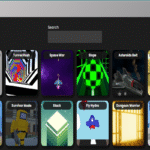An electric fence for dogs is one of the most effective ways to keep pets safely within boundaries without building a tall or permanent physical fence. Many pet owners want freedom for their dogs to run, explore, and enjoy outdoor time, but they also worry about busy roads, neighboring properties, or wildlife. An electric dog fence solves this challenge by creating a secure and invisible boundary. When used correctly, it offers a balance of safety, mobility, and comfort. The growing popularity of these systems shows how technology helps families provide a better quality of life for their pets.
What Is an Electric Fence for Dogs
An electric fence for dogs, often called an invisible fence or wireless dog fence, is a containment system that uses a signal transmitter and a special collar to keep a dog inside a designated area. Instead of a physical barrier, the dog learns not to cross boundaries due to a gentle correction from the collar. The goal is to train, not frighten. With proper guidance and gradual introduction, many dogs quickly learn to respect the new limits.
These systems are commonly used in yards where traditional fences are not practical or allowed. They are also useful for preserving the view of a property while still maintaining a secure zone where a dog can play freely.
How an Electric Dog Fence Works
Technology behind modern electric dog fences is simple but effective. The system includes a boundary and a collar that respond to each other.
Components of the System
• A transmitter that creates a signal around the selected area
• A receiver collar worn by the dog
• A boundary wire (for wired systems) or a wireless transmitter signal
When the dog approaches the boundary:
- A warning tone alerts the dog.
- If the dog continues forward, a mild static correction is applied.
- Over time, the dog learns to turn back at the warning tone.
This training method relies on conditioning and repetition rather than fear. Corrections are low level and designed only to get the dog’s attention.
Types of Electric Fences for Dogs
Several models exist based on the needs of different homes and dog breeds. Choosing the right one depends on the yard layout, terrain, and behavior of the pet.
Wired Underground Dog Fence
This is the most customizable option. A boundary wire is buried in the ground to define the exact shape of the containment zone. It works for:
• Large yards
• Irregular property shapes
• Homes with garden areas that need protection
Underground fences remain hidden and do not affect a home’s appearance.
Wireless Electric Dog Fence
This model uses a circular radio signal around a central transmitter. No wires are required, which makes installation faster. It is ideal for:
• Rental properties
• Temporary setups
• Beginners who want simple operation
Coverage is usually circular and may not suit properties with barriers or odd shapes.
GPS-Based Dog Fence
Advanced units use GPS tracking instead of wires or stationary transmitters. They provide flexibility for large outdoor areas like fields or farms. They suit active dogs that move with owners across land.
Benefits of an Electric Fence for Dogs
Electric containment systems help pet owners who want protection and freedom for their dogs. The following are the most common advantages:
• Dogs enjoy full yard access without leash confinement
• No obstructive fencing that blocks visibility
• Often more affordable than traditional fences
• Less property maintenance
• Works even on uneven landscapes or near water
• Keeps dogs away from roads or dangerous areas
A properly installed and managed electric dog fence supports healthy exercise and playtime while reducing escape risks.
Training Your Dog to Use an Electric Fence
Training is the most important step. The fence does not do the job alone. Dogs need guidance to understand the boundary. Success depends on patience, consistency, and positive reinforcement.
Basic Training Steps
- Walk the dog near flagged boundary markers using a leash.
- When the collar beeps, turn back and reward the dog.
- Repeat until the dog stops near the warning zone automatically.
- Gradually test without a leash under supervision.
Training usually takes around 2 weeks. Most dogs adjust quickly when training is calm and supportive.
Positive Reinforcement Matters
Rewards such as treats, praise, or play boost learning. Dogs should feel encouraged rather than stressed, because anxiety can delay understanding and create fear of the outdoors. A confident dog responds better to boundary rules.
Safety and Comfort: What Pet Owners Should Know
Many people worry about whether electric collars hurt dogs. Modern systems are designed with pet comfort in mind. The static sensation is mild, similar to a quick tap of static electricity from touching metal. It is not harmful.
To ensure complete safety:
• Fit the collar properly so it is snug but not tight
• Check your dog’s neck daily for irritation
• Start with the lowest correction setting
• Never leave the collar on for more than 12 hours at a time
If a dog has medical sensitivities or high anxiety, consult a veterinarian before using any correction-based tool.
Electric Fence for Dogs: Indoor and Outdoor Adaptability
Electric fences are not only for the yard. Indoor systems exist for keeping pets away from certain rooms, furniture, or hazards such as kitchens or staircases. Small wireless transmitters can block access to specific areas. This gives owners more flexibility without constant supervision.
Outdoor systems can be adapted to cover gardens, pools, and driveways. Custom setup helps protect both property and pets.
Choosing the Right Electric Dog Fence
Before making a purchase, consider a few key factors:
What to Evaluate
• Size and shape of the area
• Number of dogs using the system
• Dog breed, size, and temperament
• Battery life of collars
• Durability and weather resistance
• Warranty and customer support
Some systems include advanced options like waterproof collars or mobile app monitoring.
Budget Considerations
Electric fences come in different price ranges. Wired fences are often cheaper upfront for large areas. Wireless or GPS systems may cost more but offer convenience and portability. Maintenance, replacement batteries, and occasional repairs should be part of the budget plan.
Common Challenges and Solutions
No system is perfect, and some dogs test boundaries. With proper setup, many issues are preventable.
Common challenges include:
• Signal interference near metal objects
• Poor collar contact with thick fur
• Dogs that panic instead of retreat
Solutions involve adjusting collar fit, improving training, or repositioning the transmitter to avoid interference. Gradual and calm learning experiences reduce stress and confusion.
Legal and Neighborhood Considerations
Some neighborhoods have rules about fencing or leash laws. Electric fences allow compliance while still giving pets room to roam. Property lines must always be respected. Owners must ensure dogs remain safely within limits at all times.
Clear communication with neighbors helps prevent misunderstandings, especially if a dog is large or active.
The Future of Dog Containment Systems
Technology continues to advance. Smart features like GPS range limits, phone alerts, and automatic activity tracking support better safety and monitoring. Many electric dog fences now integrate with smart home systems. These upgrades give owners more control and peace of mind.
Companies are also improving energy efficiency and battery lifespan to ensure longer use with fewer interruptions. As awareness grows, more dog owners choose electric containment for flexible and humane pet care.
Conclusion
An electric fence for dogs is a powerful and practical solution for keeping pets safe and contained without physical barriers. With thoughtful installation, proper training, and ongoing attention, these systems give dogs freedom to explore while protecting them from traffic, wandering, or potential danger. Modern technology creates a secure environment that supports responsible ownership and happy outdoor playtime.










